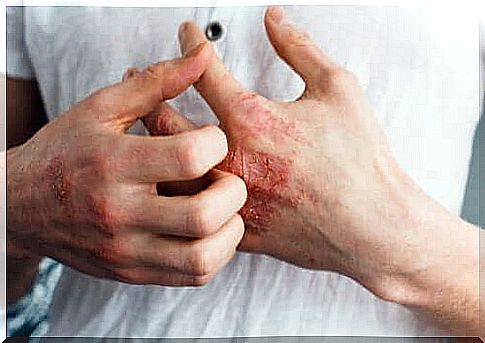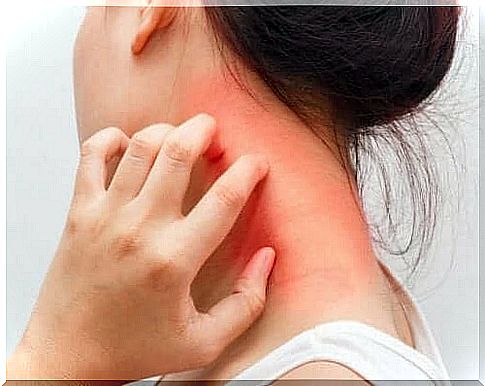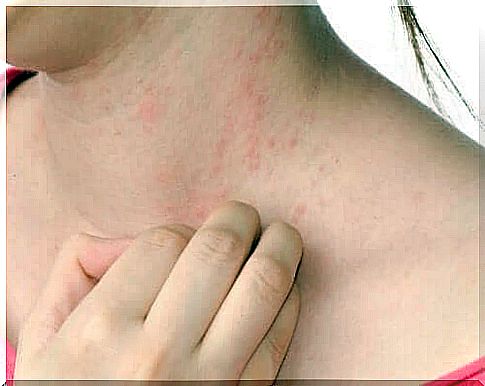What Exactly Is Atopic Dermatitis?

Atopic dermatitis, also called eczema, is a skin condition that causes redness and itching. It is more common in children. However, it can manifest at any age. It is generally chronic, but can go away for periods of time and then come back.
Currently, experts believe that this disease affects about 20% of children worldwide. Although it is slightly more common in the developed countries of the Northern Hemisphere, it occurs all over the world. Between 3 and 5% of children with atopic dermatitis continue to have it into adulthood.
The incidence of this disease is also increasing. This is due to the effects of environmental pollution and unhealthy habits. For example, constant stress and poor sleep can make it worse. While experts have not yet discovered a cure for this disease, there are several ongoing studies.
What is Atopic Dermatitis?

Atopic dermatitis is a skin disease that causes redness and itching on various areas of the skin. It is also a common cause of excessive dryness.
Atopic dermatitis is a condition that manifests as redness of the skin and itching. Atopic skin is characterized by its dryness. This leads to flaking and irritation and causes symptoms such as bothersome itching.
Sometimes it leads to the appearance of small watery bumps. According to the Spanish Pediatric Association, atopic dermatitis (Spanish link) can be classified into three groups:
- Baby or toddler. This begins to manifest itself at the age of five months. It mainly occurs on the face, except for the mouth, nose and the eye area. Sometimes it also appears on the scalp, ears, and back of the hands. It causes constant itching.
- childhood. This is a type of atopic dermatitis that starts at about age two and can last up to seven years or until puberty. While it most commonly occurs on the elbows and knees, it can occur anywhere on the body.
- maturity. This type of atopic dermatitis manifests itself after puberty and is characterized by plaques on the skin, usually with abrasions. It also mainly affects the backs of the hands, the skin of the flexion of the wrists, legs and feet.
Causes
Science has not established the causes of this disease. Still, we know that several factors can influence its onset or worsening. These factors include:
- Genetics. So far, experts believe that genetic cause is the main cause of atopic dermatitis. The children of parents with hay fever are more likely to develop the condition.
- Mother’s age. The older the mother is at the time of delivery, the more likely their child is to develop atopic dermatitis.
- Surroundings. The disease is most common in polluted cities with cold weather. It is also more common in dusty places or where people smoke.
In addition , experts know that stress and insomnia can trigger the disease. Sweat also seems to affect it, as does the use of nylon or wool garments. This disease is common in people with food allergies or other types of allergies.
Symptoms and Diagnosis

The symptoms of atopic dermatitis are skin lesions with a crusty and red appearance. The severity varies from patient to patient. The main symptom of atopic dermatitis is skin lesions.
They have a crusty and red appearance. They are also accompanied by very intense and prolonged itching. This often leads to emotional problems because of how bothersome the itching is.
In infants, the lesions are vesicular and exudative. In children, the lesions appear dry, leathery, and thick. Also in adults the lesions are leathery and hyper- or hypopigmented. In other words, they have little or too much color.
Those who suffer from this disease for a long time have an increased risk of developing cataracts between the ages of 20 and 30. Experts still don’t know why. They are also more likely to develop eczema herpeticum if they contract the herpes simplex virus.
A medical professional can usually diagnose the disease simply by looking at the patient’s skin. A skin examination and medical history analysis are usually sufficient. Sometimes medical professionals do some tests with patches. However, lab tests are rarely required.
Are you experiencing any symptoms of this condition? If so, see a dermatologist as soon as possible. This professional is responsible for the correct diagnosis and treatment.








